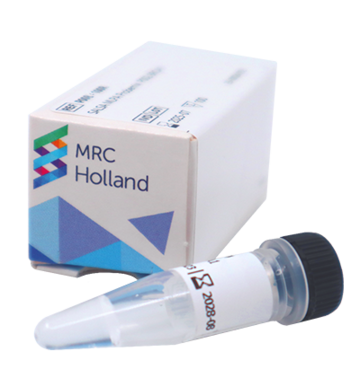SALSA MLPA Probemix P489 BARD1 is a research use only (RUO) assay for the detection of deletions or duplications in the BARD1 gene, which is associated with hereditary breast and ovarian cancer, as well as neuroblastoma.
The BARD1 (BRCA1 associated RING domain 1) gene is transcribed from chromosome 2q35 and functions as tumour suppressor by playing an essential role in BRCA1-mediated double-strand DNA repair. BARD1 shares homology with the two most conserved regions of the cancer susceptibility gene BRCA1. Both BARD1 and BRCA1 harbour two BRCA1 C-terminal repeats (BRCT) and an N-terminal RING motif (Tarsounas et al. 2020). Heterodimerization of de RING motives of both proteins is essential for the E3 ubiquitin ligase activity of the BRCA1-BARD1 complex. Moreover, the BRCA1-BARD1 heterodimer facilitates DNA repair via the homologous recombination pathway by interacting with DNA repair proteins such as BRCA2 and RAD51.
Autosomal dominant mutations in the genes BRCA1 and BRCA2 are the most frequent cause for familial breast cancer. Other breast cancer susceptibility genes include PALB2, CHEK2, ATM, and BARD1. While most pathogenic variants of BARD1 are caused by small point mutations, copy number variations have also been reported (Sabatier et al. 2010). Moreover, copy number variations of BARD1 have been related to congenital conditions such as hypospadias and congenital heart defects as well as developmental delay (Cimmino et al. 2017).





